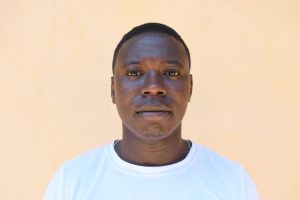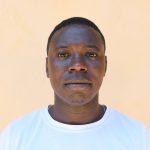The 500 members of the Kiliku Community struggle daily to access safe and sufficient water. The only water source available to them is vulnerable to contamination, as it is shared with animals, jeopardizing the community's health and well-being.
"Water from the earth dam is stagnant and more than imaginable contaminants including human beings, animals, and other pollutants roll free and make the water unsafe for human consumption posing significant health threats to the users. There is no order when humans and animals get water from the source; the color of the water has even changed to green as a sign of how dirty it is," shared Field Officer Jefferson Mutie.

"Community members report several health impacts from drinking water from an earth dam. Common issues include gastrointestinal problems like diarrhea and stomach cramps, often linked to microbial contamination. There are also concerns about skin rashes and eye irritations, which can be caused by algae or other contaminants," continued Jefferson.

The contaminated water source.
The grave concerns of water-related illnesses are exhausting and consuming. Unfortunately, without any other options, people are forced to consume the water that makes them ill.
66-year-old Juliana Nzaumbi has experienced the hardships of the community's water crisis for a long time.
She shared, "I have lived in this community for a very long time. I have seen people suffer in getting water, myself included, and at times trekking painfully just to save myself, as water is very precious here and in life generally."
Without sufficient water, Juliana must constantly balance her goals. Every day is consumed with traveling the difficult journey and making sacrifices. Some days, she must choose between quenching her thirst and doing a chore like cleaning her clothes because doing both seems nearly impossible.
"I would love to wake up, prepare tea, and work on my farm without being worried or spending a lot of time fetching water, as it is very demanding," she expressed.
Installing a well will give Juliana the peace of easily accessing safe water without fearing the long distance or impending illness. She can then focus on her farm. Having the tools to meet her needs will give Juliana and the rest of her community the opportunity to thrive.
"With fewer waterborne diseases and less time spent collecting water, school-going children can focus on education and health, ultimately fostering a more prosperous future for everyone," concluded Jefferson
Solving the water crisis in this community will require a multifaceted system that will work together to create a sustainable water source that will serve this community for years to come.
Note: Our proposed water point can only serve 300 people per day. We are working with the community to identify other water solutions that will ensure everyone has access to safe and reliable drinking water.
Steps Toward a Solution
Our technical experts worked with the local community to identify the most effective solution to their water crisis. Together, they decided to construct a dug well and sand dam.
Dug Well Near A Sand Dam
Once a sand dam is installed and has time to mature by gathering sand and silt, groundwater increases significantly in the entire area surrounding the project. This provides a reliable source of groundwater that wasn’t possible before. As a result, wells can be constructed to take advantage of the water stored and filtered in the collected sand.
During construction, we build a platform for the well and attach a hand pump. The community gains a safe, enclosed water source capable of providing approximately five gallons of water per minute.
This dug-well will be connected to a sand dam to obtain water.
Community Education & Ownership
Hygiene and sanitation training are integral to our water projects. Training is tailored to each community's specific needs and includes key topics such as proper water handling, improved hygiene practices, disease transmission prevention, and care of the new water point. Safe water and improved hygiene habits foster a healthier future for everyone in the community. Encouraged and supported by the guidance of our team, a water user committee representative of the community's diverse members assumes responsibility for maintaining the water point, often gathering fees to ensure its upkeep.

 Protected Dug Well
Protected Dug Well
 Rehabilitation Project
Rehabilitation Project



















